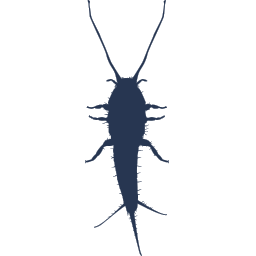Ants feature as cute little animals in a variety of books and movies. Families have always enjoyed watching popular G rated movies like Antz and A Bug’s Life. But are ants as adorable as they’re portrayed in the movies? Is it true that they have perfected the art of organisation through specialised roles and following simple rules? It’s a general consideration that ants are beneficial to the environment, but they can also cause problems in the home and garden.
Ants are thought to be a pest especially when they infest buildings and gardens, with many homeowners seeking treatment to get rid of them once an infestation occurs.
Why Are Ants Attracted to Your Home?
- Ants will search for water during dry periods.
- They will look for various food sources. This could be crumbs in the kitchen or the last bit of food in your pet’s food bowl.
- Maybe they’ve lost their nest and your home looks like a good replacement. Torrential rain or other natural causes can wipe out an ant nest and once ants have lost their home, they will look for another.
When do Ant Infestations Usually Occur?
Spring and summer seasons are the perfect time for ants to invade your home.
Kitchens and bathrooms are the most common rooms in the house for an ant infestation.
Common Ant Types
There are over 4000 different species of ants in Australia. Not all of them are pests but the ones that are considered to be a pest, often have their nests inside buildings. The pests (mostly introduced species) can be found in food preparation areas and are capable of spreading disease.
Carpenter ants
- Carpenter ants (Camponotus) are the most common ants in Australia. They can vary greatly in size and colour with the smallest measuring around 2mm and the largest measuring 14mm in length. While they are generally brown in colour, they range from a light amber to mid brown.
They are nocturnal and prepared to travel a long way for food. They love to eat insects but will also look to sweet foods.
Fire ants
- Fire ants (Solenopsis invicta) are known as a ‘super pest’. They are aggressive, adapt readily and can survive anywhere. Fire ants are dangerous and could severely damage the environment and our agriculture and tourism industries.
Fire ant nests have no obvious entry or exit holes. These mounds can be up to 40cm high but may also be flat. Fire ants are small and coppery brown in colour. They can inflict painful stings to humans or animals and are a category 1 restricted pest under the Biosecurity Act of 2014.
Bull ants
- Bull ants (Myrmecia) are one of the oldest ant group. They have a similar body shape to wasps and can vary in size between 8 to 40mm. With around 90 species there’s a large variance in behaviours and life cycles, although many have a bright red or orange colour on the head or torso.
They eat animal prey which they carry back to their nest as well as collecting nectar and other plant juices. The bull ant can deliver a painful sting and are aggressive.
Sugar Ants
- Sugar ants (Camponotus consobrinus) can be found in urban areas as well as bushland. Their name comes from their favourite food source, but they are attracted to any sort of sweet food. The sugar ant is a relatively large gold and black ant. You will find they live in large colonies and their nests have large entry holes. Sugar ants are mainly active at night.
Black Ants
- Black ants (Ochetellus glaber) are around 2.5 to 3mm long. As their name suggests they are black in colour, sometimes with a purplish iridescent shine. They build their nests outside around garden paths and rocks but also can be found indoors in the ceiling or cavity walls. They prefer sweet food but are happy with an assorted diet.
Argentine Ants
- Argentine ants (Linepithema humile) is a dark ant with the worker ants being around 3mm long and the Queens can be two to four times that length. These ants are a common household pest and gain entry to a home looking for food or water.
Pharaoh Ants
- Pharaoh ants (Monomorium pharaonis) can be around 1.5 to 3mm long and are light yellowish brown to dark brown in colour. Frequently found in hospitals and nursing homes they prefer warmer areas of buildings. This ant has a preference for high protein food and are attracted to meat, fatty foods and vegetables.
How to Kill Ants
It’s important to identify the type of ant that’s causing you problems. Different species of ant respond to different treatments and sometimes you can accidentally make the matter worse. Some important things to remember:
1. Do Not Feed Them / Remove Ant Tempting Foods
Ants are attracted to a good food source.
- Don’t leave food out
- Keep meals to one area of the house
- Clean up thoroughly after meals
- Used sealed containers for any opened food packets or leftovers
- Check for any leaking pipes. Ants also need a water source.
2. Use Acid & Gap Filler
- Use lemon or vinegar to clean your benches so ants cannot follow ant trails (the vinegar won’t kill the ants but will deter them from returning)
- Fill in any holes you think ants are using to find their way into your home
3. Get Them at the Source
The best way to stop an ant invasion is to keep them out of your home in the first place.
Check for possible entryways into your home – not just for ants but for any pests.
- Seal any cracks or holes you find along the exterior of your home
- Use silicone caulk to create an ant proof seal
How to Identify Where Ants are Coming From
If you find ants inside your home, follow them to see where they have gained entry. Pay particular attention to the building’s foundation and any pipes or vents that come into your home. Also don’t forget that they may already be living inside your home. Carpenter ants, for instance, can build their nest inside your walls.
Methods to kill ants once you find their nest
1. Bait them
There are a few homemade bait recipes available on the web. However, you need to ensure that you get the measurements right. It’s important that the ant forager gets back to the nest with the bait. Therefore, it can’t be so strong that it kills the delivery guy. You also need to determine whether your ants are partial to sweet or protein food sources. Here’s one of each.
Sweet
2 tablespoons of Borax mixed into Jam (or honey). Mix it together in a paste and place a small amount near where the ants are active
Protein
2 tablespoons of Borax mixed in peanut butter. Set it in mounds near where the ants are most active.
2. Use an insecticide
If nothing seems to be working, you may need to look at insecticides. Insecticides can be an effective way of getting rid of ants, but you do need to be careful when using them. Always remember to carefully follow the instructions on the manufacturer’s label.
3. Calling a professional
As with all pest problems, there comes a time to call in a professional.
- When you can’t identify the ant type
- When you have a large ant infestation
- When you think you may have a dangerous type of ant i.e. fire ants
A professional pest control expert will assess your property and give you the best advice to deal with your problem. They will also provide you with the most suitable, protective treatment plan.





















